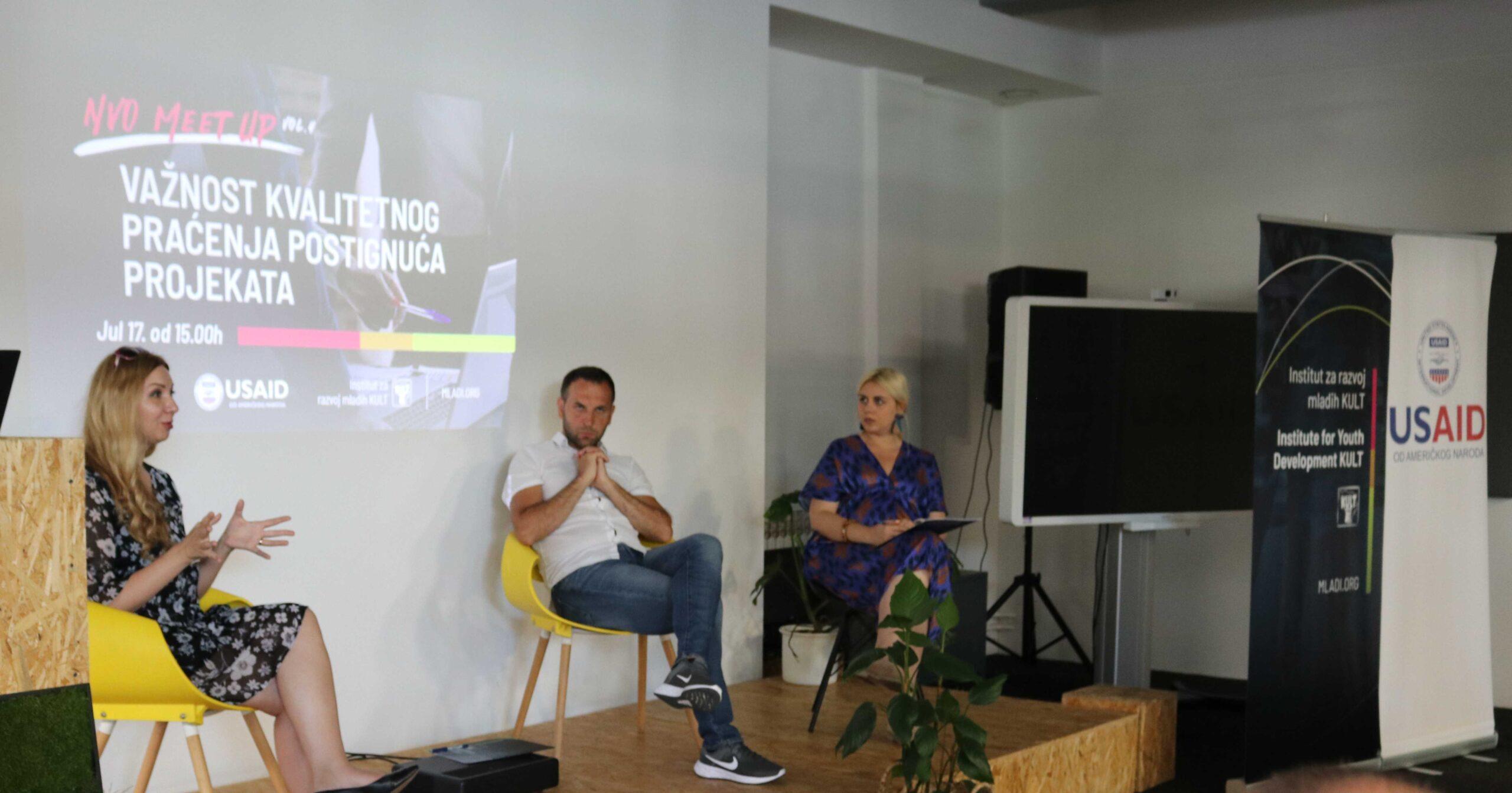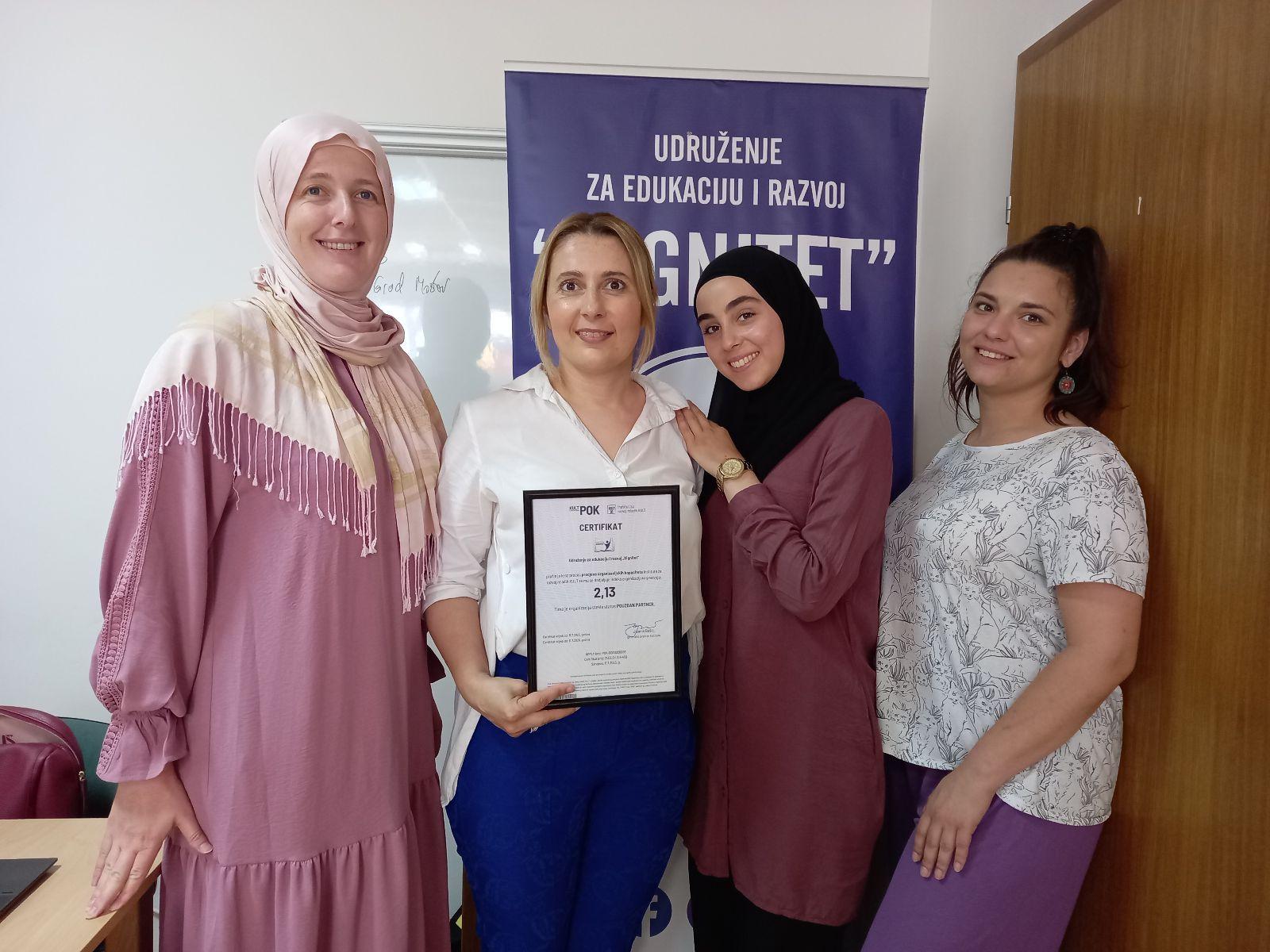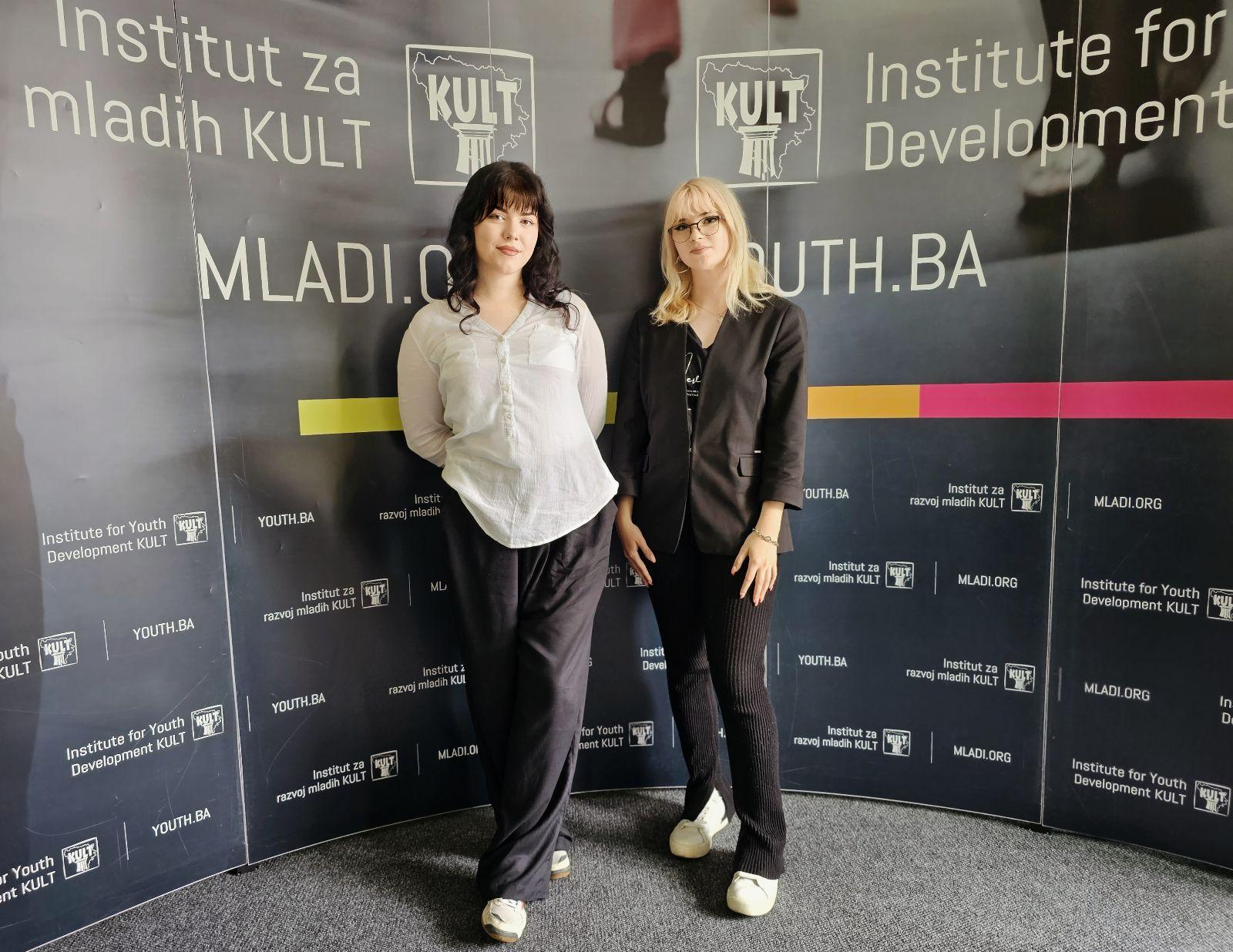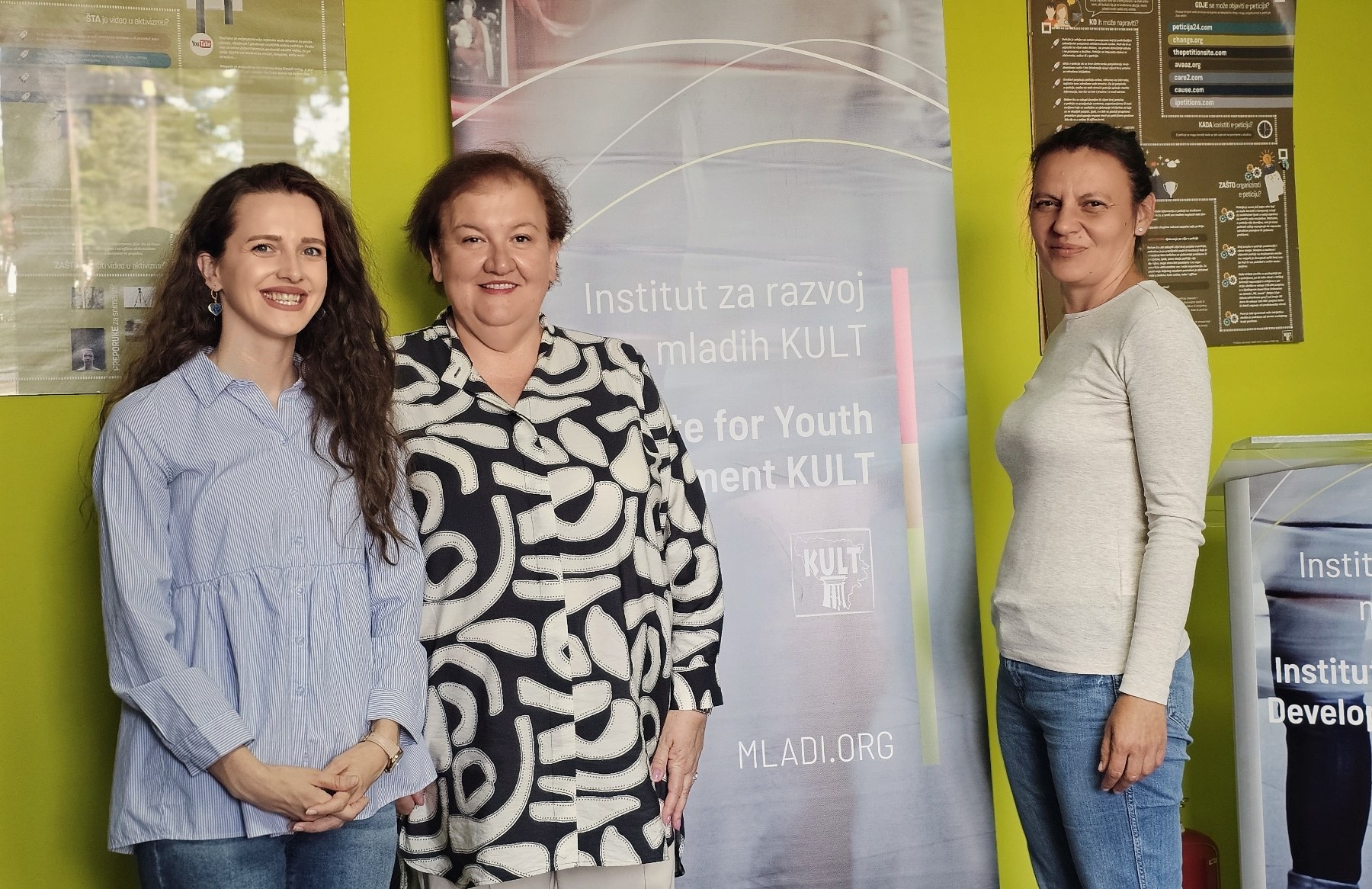The Institute for Youth Development KULT held the fourth NGO MeetUp on the topic of the importance of robust monitoring of project performance.
The following recommendations were developed in conversation with Salminka Vizin, Deputy Chief of Party of USAID’s Monitoring and Evaluation Support Activity, and Aziz Đipa, Head of the Monitoring, Evaluation, and Research Department at the Institute for Youth Development KULT.
- Carefully plan your project along with key performance indicators.
When planning, preparing and writing the project proposal, take time to think about the key performance indicators. Think about how you will recognize if the project is successful. How will you know that you are achieving the results you want and how will the target group know that there has been some progress?
What will your users or target group lose if you don’t implement the project or maintain the services you offer them – plan and monitor to know the answer to this question!
- Collect and monitor (key) data.
Decide how you will collect information on key performance indicators. Sometimes, it’s best to do this in-house. What does this mean?
It means that your project team and the tools and methods developed can be a source of information about the project. Planning and creating the tools you will use (such as questionnaires and forms), along with regular monitoring and recording of changes, will streamline the monitoring process. For smaller projects, this type of data collection is usually sufficient. As the organization grows and requirements increase, you can incorporate additional external sources.
- Stay up-to-date, and don’t wait for the reporting period. It can be too late and stressful.
Ensure that all team members, management, and stakeholders are informed about the current status of the project and the work completed. Likewise, provide them with all relevant data that may be important for any phase of implementation. If necessary, hold additional meetings to set expectations, milestones, and deadlines. It’s okay to plan and make changes whenever you need to, regardless of the stage of the project.
- Manage expectations and be aware of your context!
There are many factors and events that can affect the outcome or direction of a project. It is important to keep these circumstances in mind during the various phases of the project and build these uncertainties into any strategy for monitoring the achievement of results. Having a plan A is important, and a good plan B can simplify a project and keep it on track even when it seems impossible.
- Flexibility is very important; always stay flexible!
During the project, plans can change and that’s fine, as long as the donor is on board with it. Be prepared to adjust course if needed to follow the activity plan and achieve the planned results. If circumstances, expectations, or scope of work change, communicate those changes to the team and reassign work as needed.
- We need plans for everything, and monitoring and evaluation is no exception.
Project monitoring and evaluation – PME) is a vital part of any project as it helps track progress, identify risks, measure outcomes and lets us learn from the feedback we collect on different aspects of the project. However, developing a PME plan can be challenging, especially if you have multiple stakeholders, complex goals, and limited resources. We share some best practices to follow when creating a PME plan that is effective, realistic and aligned with your project goals:
- a) Determine the purpose and scope of the PME plan.
Before you start developing your PME plan, you need to define the purpose and scope of your PME activities. Why should you monitor and evaluate your project? Who will be using the PME information? What are the key questions you want to answer and what are the indicators you will measure? How will you use PME results to inform, make decisions and improve performance?
Answering these questions will help you focus your PME plan on the most relevant and useful aspects of your project.
- b) Choose the methods and tools for your PME.
Once you have defined your purpose and scope, the next step is choosing the methods and tools you will use to collect, analyze, and report on the collected (PME) data. Depending on the context of the project, you can use quantitative or qualitative data collection methods, or a combination of both.
Success stories or case studies can provide very interesting datasets useful for tracking qualitative performance indicators.
- c) Plan your resources and responsibilities.
The development and implementation of the PME plan require sufficient resources and clearly defined responsibilities of team members or external collaborators. Estimate the time, funds (not just money) and human resources you will need for your PME activities and allocate them accordingly.
Assign roles and tasks to team members who will be collecting data for the PME.
- d) Track your progress and risks.
Monitoring is the continuous process of collecting and analyzing data about the inputs, outputs and outcomes of your project. It helps you track your progress towards your goals and identify any deviations, challenges or opportunities. You should monitor your project regularly, using the methods and tools you have chosen. It is also important to monitor risks that may affect your project’s performance, such as changes in the environment or assumptions.
- e) Evaluate your results and performance.
Evaluation is a systematic process that uses a specific methodology for assessing the results and impact of your project. It helps you make a realistic assessment, addressing the question: To what extent has your project achieved its goals and contributed to the desired change? You should periodically evaluate your project using methods and tools selected by you or an external consultant.
Ultimately, it’s clear that every step is important and must be executed correctly to achieve the desired results. Commitment to monitoring the process, all activities, and achievements will contribute to a better understanding of the situation we are in and, if necessary, allow us to adjust certain activities without jeopardizing the entire project. Plan B becomes more important than Plan A when we recognize it’s time to implement it. However, this is preceded by careful planning and updating.
















Leave a comment